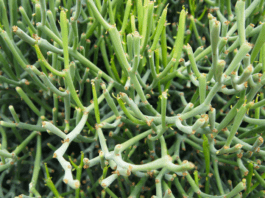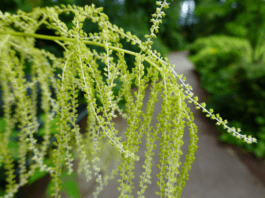Who Else Wants To Enjoy Wildflower
Wildflower popularity is going wild. Bright yellow lance-leaved coreopsis, black-eyed Susans, white oxeye daisies, and purple rocket larkspurs are popping up in beds and meadows everywhere.
In back yards, along sidewalks and driveways, and even as decorative trim along the front of houses — adding spectacular color and beauty to home landscapes across the country.
The key to growing wildflowers successfully is understanding the conditions they require in their native habitats.
Soil type, average rainfall, temperature range, shade, and sunlight are all important factors. Consequently, the wildflowers best suited to your property would grow naturally under your property’s environmental conditions.
Most wildflower seeds come prepackaged in mixtures. These mixtures usually contain blends of annuals, perennials, biennials, and a “nurse” grass seed, such as hard or tall fescue.
The nurse grass will germinate quickly, thus preventing weed growth while the wildflowers grow and become established.
Most garden centers stock several mixes of wildflower seeds suitable for sun or shade areas. Wildflowers’ best use is in areas with an ongoing fight with weeds, such as waste areas, banks, and under trees.
In these places, the planting of wildflowers comes into its own. (Let the wildflowers be your weeds.)
The packets of wildflowers from most garden centers will do an area of about 14 square meters.
Firstly rid the area of weeds. This can be done by hand weeding, hoeing, or spraying with a weed killer, chemical or organic.
Once the weeds have been removed or, in the case of spraying, they have died down, the next best step is to water the area daily to encourage dormant weed seeds to germinate.
After about 10 days, these seeds should show a carpet of young plants, and another application of a weed killer will quickly take them out.
Do not disturb the soil, but the following day after spraying, you can start sowing your wildflower seeds.
Put a thin layer of potting mix or fine mulch over the area to be sown and mix your packet of weeds with sand — about 10 parts sand to one part seeds. This enables you to spread the seeds more quickly over the area.
Cover the seeds with a further thin layer of potting mix to keep the seeds protected from birds and strong sun.
Moisten the seedbed and continue to do so on the no-rain days. If you keep the area nice and moist the seeds will germinate fairly quickly and within seven to 10 days a good show of young plants will be seen.
You will then see how good your scattering of seeds has been. If any large areas have been missed, second sowing will fill them in.
Dense areas could be thinned and, if done carefully when the soil is nice and wet, the seedlings could be moved to sparse areas.
Now you can sit back and watch nature take over, with your first flowers appearing in about six weeks. This will be followed by more flower types, with most flowering by 12 weeks.
The display should take you right through the summer and well into autumn. Once the best of the flowering has finished, allow the plants to stand and dry as this matures the new seeds in the flower heads; these should scatter naturally for new displays next season.
The tops can also be cut down with a weed eater held about a foot above the ground. Allow the top to fall down into the area and this further distributes the seeds.
Some plants are perennials and may stay in foliage or die back during winter. Usually, enough plants keep going to give coverage during winter and often a few odd flowers.
Two types of wildflower mixes are available, with one a little more suitable for more shaded areas such as under trees, but remember that if weeds do not grow under your trees because of insufficient light, then you will not be able to grow wildflowers there either.
One way of helping them to flourish is by the removal of some lower branches, which may allow enough light under the trees to get the plants established. This is especially so if facing north.
I know several gardeners who have really got into the swing of wildflowers and have in some cases killed off their lawn and planted wildflowers in its place. This can really give a backyard an interesting and lovely concept.
Roadsides have also been planted with excellent results.
There are 20 or more types of seed in a packet and enough to produce several thousand plants, so have a go; it looks much better than weeds and requires much less work.
4 Wildflower Varieties You Can Enjoy In Your BackGarden
1. Coreopsis
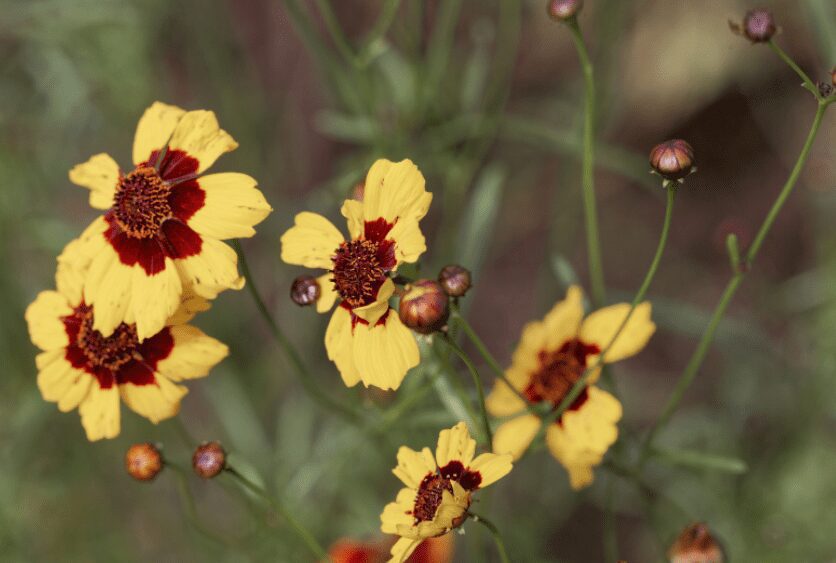
Coreopsis, often known as tickseed, belongs to the Asteraceae family, which consists of approximately 114 species of annuals and short-lived perennials native to North and South America.
The genus is closely related to Bidens, a summer annual. Horticultural research indicates that they should be grouped due to their tight association.
Coreopsis prefers full sun and good drainage, but its flowering performance will improve if continuous hydration is provided.
The practice of deadheading prolongs the blossoming period until the first frosts. Late in the season, double and semi-double varieties might appear unkempt and fading.
This group will benefit from deadheading, which will also clean up displays. Before frost, pruning perennials to the ground encourages new growth to survive the winter.
Most species of coreopsis have single-stemmed flower heads. These produce a centrally-located disc that is surrounded by yellow florets; however, the florets can infrequently be white, pink, mahogany, or red.
Some variants have a feathery appearance. The majority of the genus forms a fibrous root structure. Some species reproduce by the development of rhizomes.
Some cultivars of the C. tinctoria species have yellow flowers with red mahogany spots at the petal base.
Many of these must be propagated through cuttings because the outcomes of growing from seed can be varied. Existing species and hybrids have a limited shelf life. Dividing plants every other season can help to retain their vitality.
The tinctoria genus includes the charming dwarf plant ‘Mahogany Midget’, which grows to a height of 25 centimeters and flowers until the first frosts.
The cultivar C. tinctoria ‘Radiata Tigrina’ is one of the most appealing. It creates finely cut foliage and bright yellow flowers until early October.
The petals are sprinkled with a dash of red for exceptional displays. The plant reaches a height of 30 centimeters and is a perfect variety for adding color and structure to any border.
This season, I am cultivating C. x hybrida ‘Incredible Tall Mix’ This cultivar, the result of intensive breeding is suitable for the back of the border.
It grows rapidly and produces a variety of bicolors, including dark red with cream or yellow.
2. Black-Eyed Susan
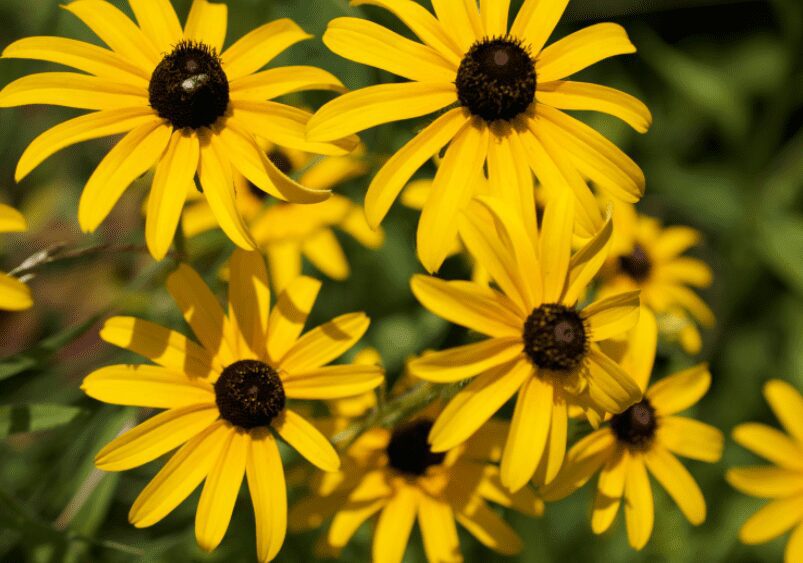
All you need is a sunny location to enjoy the bright yellow blooms with dark brown to bronze centers.
Black-eyed Susan blossoms are long-lasting, and they make excellent cut flowers. They also are resistant to nematodes.
In University of Florida tests, this pest did not affect black-eyed Susans planted in nematode-infested soil.
So, for great color, follow these care tips:
- Till the soil deeply, and add organic matter to sandy planting sites.
- Keep the soil moisturized by watering when the surface begins to dry.
- Feed monthly with a general garden fertilizer.
- Trim old flower heads as the blossoms begin to decline.
- Control slugs, the one major pest of black-eyed Susans.
- Most plantings die back to a cluster of foliage during winter, then spring growth begins.
- Some produce offshoots and can be divided to form additional plants.
3. White Oxeye Daisies
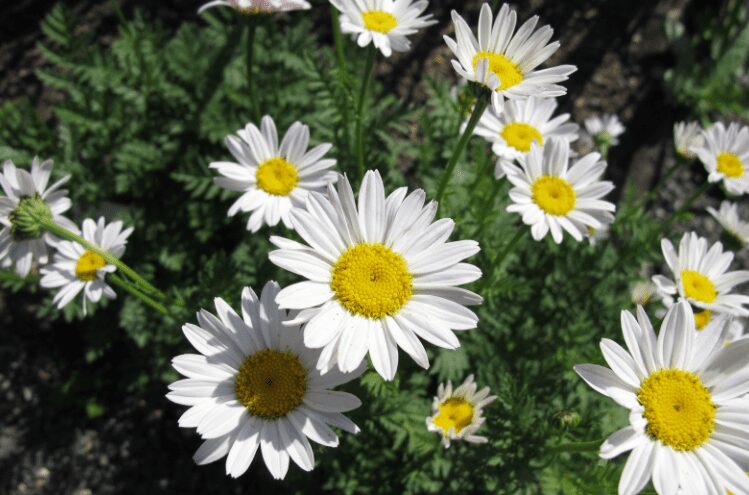
- Botanical name: Chrysanthemum leucanthemum.
- About the plant: This is the common field daisy you see in April and May along Georgia roadsides. Although Chrysanthemum leucanthemum is native to Europe and Asia, it has naturalized throughout the United States and Canada.
North Carolina has planted masses of ox-eye daisies along its interstate highways. The individual flowers grow on 1-to-2-foot stems and have white petals and mustard-yellow centers.
Even though the blooms are a little smaller than those of Shasta daisies sold for garden use, the plants are stiffer and aren’t prone to flop over.
In a meadow, ox-eye daisies compete well with grass. Bloom’s time in Georgia is from mid-April to late May.
- Use in the garden: If you have an open, sunny space (or a pecan grove), this is an excellent plant to give you flowers over a long period.
Ox-eye daisies also can be incorporated into a perennial garden and combined with Shirley poppies and blue cornflowers. This is an excellent flower for cutting and will last up to 10 days in an arrangement.
- Planting and care: As with any meadow flower, prepare the soil from scratch, tilling and smoothing out before you plant seeds (throwing seeds onto existing grass is throwing away money and time). Sow seeds straight in the ground in September and October.
Chrysanthemum leucanthemum is a true perennial that prefers fertile soil and may take two years to bloom from seed. Once established, mow the plants after they have gone to seed to encourage further reseeding.
4. Purple Rocket Larkspurs
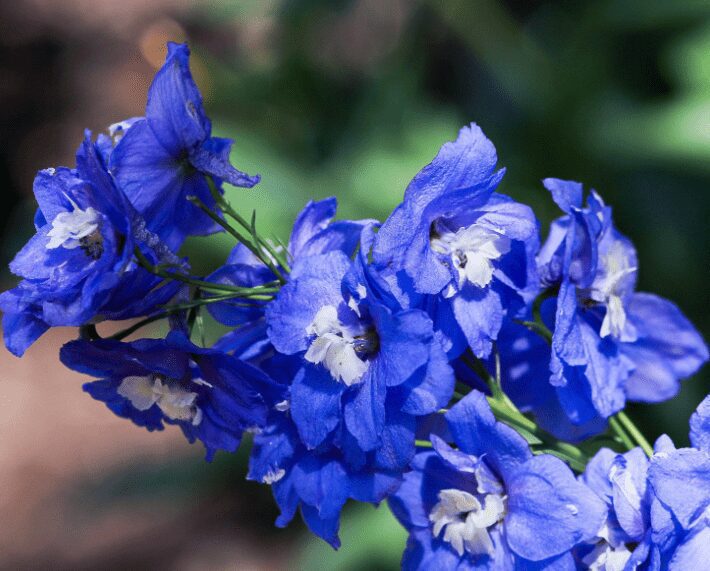
Larkspur (Delphinium Consolida Rocket) is an annual flower cultivated from wildflower seed. Depending on soil quality and rainfall, its typical height ranges from 24 to 36 inches.
It typically has two to three stems with branching forks. The leaves are alternating, 3 inches in diameter, and have a lacy look.
The beautiful 1-inch flowers come in a variety of hues, including white, lilac, and pink. What a stunning display of color in the wildflower meadow, and so simple to grow from Larkspur wildflower seed.
Rocket Larkspur Delphinium blooms during the summer for approximately one to two months.
Each flower is replaced by a pod carrying several tiny black wildflower seeds, which are easily disseminated by wind gusts.
Larkspur, like many other wildflowers, can self-seed if wildflower seeds are permitted to fall to the ground. The seed will remain dormant until temperatures and moisture levels are optimal for germination.
To aid in the germination of Rocket Larkspur seeds, place the seeds on a damp paper towel, seal the paper towel and seeds in a Ziploc bag, and store them in the refrigerator for one to two weeks.
After extracting the Larkspur seeds from the refrigerator, sow them straight into the prepared soil outdoors and keep them moist until germination.
Care for larkspur entails a severe pruning of the plants once the flowers have faded. This will promote a second flowering later in the season.
The seeds of wildflowers and the plants of Rocket Larkspur are poisonous, therefore avoid consumption.




